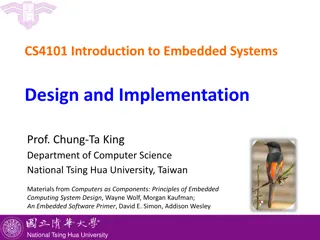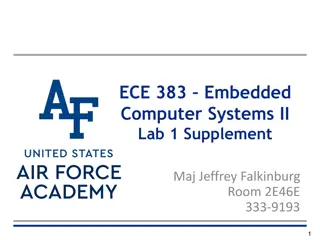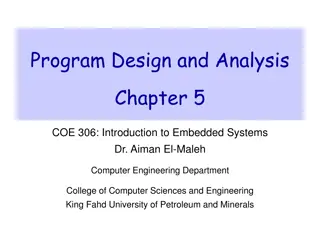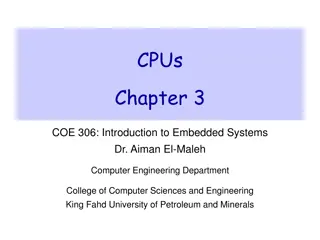Embedded Systems Design Process in the Embedded systems
Embedded systems are all around us, from the tiny microcontrollers in our household appliances to the sophisticated control systems in cars and aeroplanes. But how are these systems designed? Let's delve into the basics of the embedded systems design process in simple terms that anyone can understand.n
Download Presentation

Please find below an Image/Link to download the presentation.
The content on the website is provided AS IS for your information and personal use only. It may not be sold, licensed, or shared on other websites without obtaining consent from the author. Download presentation by click this link. If you encounter any issues during the download, it is possible that the publisher has removed the file from their server.
E N D
Presentation Transcript
Embedded Systems Design Process Embedded systems are dedicated to specific functions and are often hidden from view. by Embedded Hash
Definition of Embedded Systems 1 2 3 Special-Purpose Systems Dedicated Functions Hidden from View Often concealed within the devices they operate. Designed for specific tasks within a larger system. Unlike general-purpose computers, embedded systems have particular functions.
Identifying Requirements Gathering Requirements Defining Functionalities Understanding what the system needs to do. Specifying the system's performance and constraints.
System Architecture Designing Interactions Visualizing Structure Deciding how system components will communicate. Using block diagrams to represent the system's architecture.
Hardware Design Physical Components Component Selection Designing microprocessors, memory modules, sensors, and actuators. Choosing components that meet system requirements.
Software Development 1 Writing Programs Developing code in programming languages like C or C++. 2 Compiling & Loading Converting code into machine language and loading it onto hardware. 3 Real-Time Tasks Ensuring software is efficient and capable of handling real-time tasks.
Testing and Verification 1 2 Functional Testing Performance Testing Ensuring the system performs its intended functions. Checking the system's performance under different conditions. 3 Reliability Testing Identifying and fixing any bugs or errors.
Integration and Deployment Component Integration System Configuration Assembling hardware and installing software. Configuring the system settings for deployment.
If you want learn more About Embedded systems
























